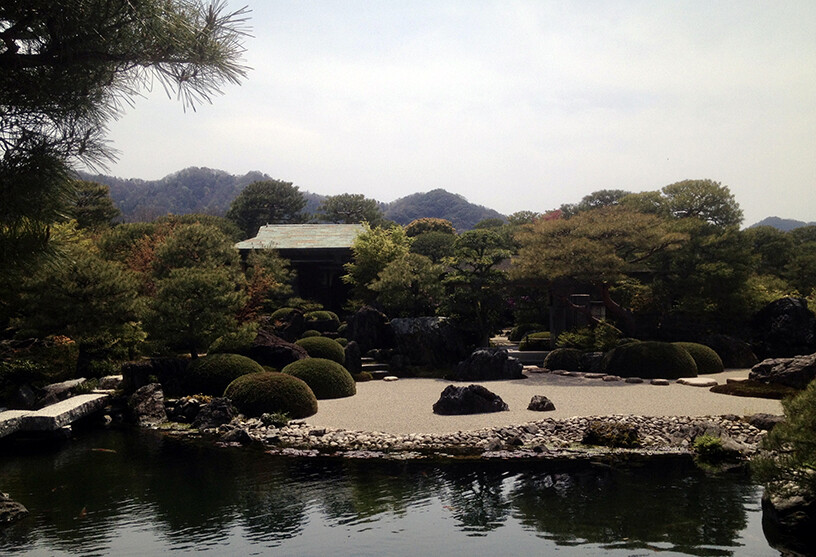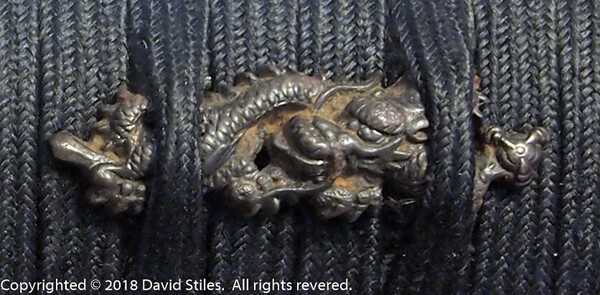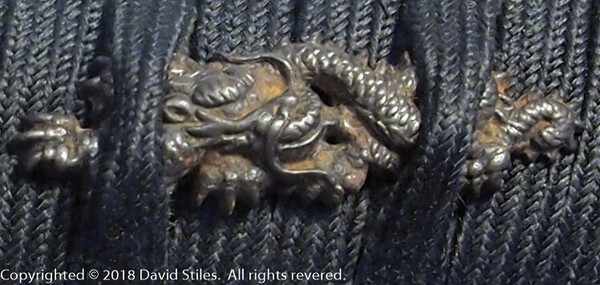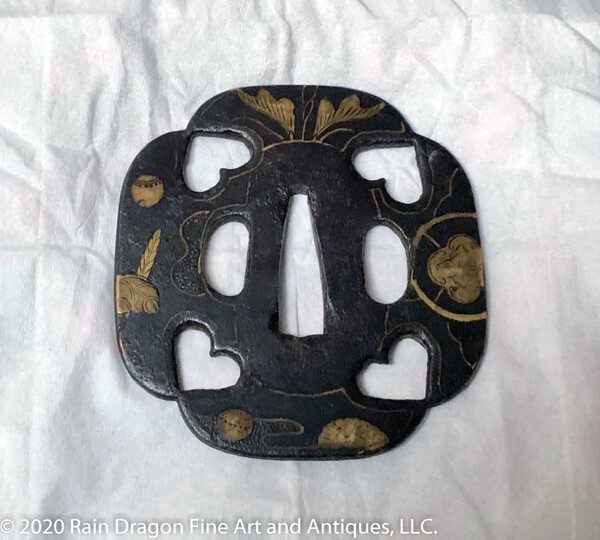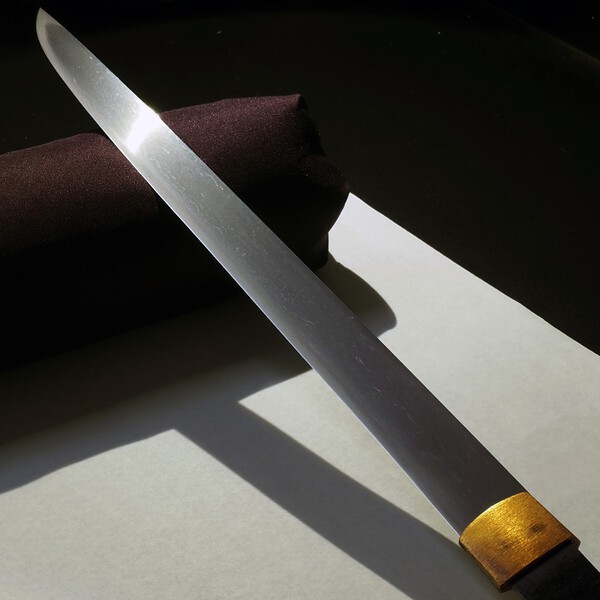-
Posts
2,899 -
Joined
-
Last visited
-
Days Won
3
Content Type
Profiles
Forums
Events
Store
Downloads
Gallery
Everything posted by Soshin
-
Not an expert. Sorry I missed the second page of replies, so I deleted my comment. I would contact Mr. Roger Robertshaw. I once had a Hizento wakizashi that he liked the signature of, and it later passed NBTHK Hozon after getting polished in Japan.
-
@Kurikata Nice looking kozuka, love the design, thanks for sharing. It me it has an early Edo Period vibe of (Kyō-Kinkō 京金工) group to me. I not an expert when it comes to this type of Edo Period soft metal Japanese sword fittings so take what I type with a truck load of salt.
-
@Shugyosha John J. thanks again for your support and additional information. @Geraint Thanks for the helpful weblink. I remember reading it a while back but at the time I didn't have a wide mei Nobuie tsuba examples in my collection. Therefore, my study was not very tangible. Here is a photo of my new tsuba I picked up at 2023 DTI. It was unpapered and affordability priced as the NBTHK consider all wide mei Nobuie tsuba as having a fake signature (gimei 偽銘). (This might have changed so please correct me if I am wrong.) Notice the wide placement of the Kanji at top and bottom ends of the (seppa-dai 切羽台) area.
-
Thank you so much John @Shugyosha . This is extremely helpful. I am researching the so called wide mei Nobuie in The Index of Japanese Sword Fittings and Associated Artist by Robert E. Haynes entry ID# H 07074.0 on page 1389. I am still working on photos I took on Monday.
-
I am researching for educational purposes only a new iron tsuba I picked up at the 2023 DTI show in Tokyo last November. Does anyone have any old photos or scans of R. E. Haynes Auction Catalog #7, Sept. 25, 1983, pg. 48-49? It would be a tremendous help to my research. Thank you very much in advance. Let me know if you have any questions or concerns.
-
That is a possibility. I have gotten and seen some old boxes with mismatched lids or replacement lids before.
-
Nice tsuba. Looking at how the sukashi design was done, I think this tsuba is clearly the work of Shoami School. The Owari group never used (nikubori ji-sukashi 肉彫地透かし) technique in their openwork designs. It was a common technique used by the many Shoami schools located all over Japan during the Edo Period. I also agree the Kinai School attribution is not accurate from what I know of the school's work.
-
Here are my dragon menuki that fit the Chinese New Year theme nicely. They are made of iron and and important part of a koshirae I have. Enjoy.
-
I am happy to report that the above tsuba is now owned by me. Here is link to my writeup about this exceptionally fine tsuba for any interested. I have always really liked tsuba made by the Hoan School. Tsuba Gallery #3 | Tsuba Otaku
-
I am not a fan of the stand above with the design as I don't have a tsuba that matches that theme. I purchased a plain black stand from DFX [Darren Harvey] and was incredibly happy with it. Here is a photo of that stand in action.
-
I like the openwork design that was made famous by the Akasaka School during the Edo Period, but it looks like a modern tsuba cut from a modern mild steel (low carbon steel) plate to me. Therefore, I don't think it was traditionally made.
-
Here is a favorite Kiku tsuba of mine I traded to Skip Holbrook for a NBTHK papered Higo Kinko tsuba a few years ago. The size was exceptionally large, and the iron was extremely nice and had a great feel in hand. It measures 10.3 cm (4.1 inches) wide by 10.4 cm (4.01 inches) high. It is 6.6 mm (0.3 inches) at the rim and gently thins toward the middle.
-
@BIG Seeing any key details about the texture of iron of the plate and the rim of the tsuba in the photos provided is exceedingly difficult for me. I might have a display issue on my computer, or I might have clicked on something incorrectly as the language of the website is German. The examples provided by @Simon R are some exceptional reference examples. The bottom Yagyu tsuba I think was sold between local collector friends and later to Gery Doffin a while ago.
-
Les, I agree with @Bugyotsuji comments. Assuming the tsuba is of high quality and has historical or artistic value, it is always better to have a custom box made for the tsuba. I have a NBTHK Tokubetsu Hozon papered high quality tsuba that has a nice quality outer box, but the central post is not custom made and like yours does not fit as well as it should. Getting just a custom box insert and pad made in Japan for what is a nice quality outer box would be a clever idea. I was thinking it would also give me a chance for the elusive NBTHK Juyo rank for this fine tsuba.
-
Thanks @Dan tsuba I agree. Some really intresting articles you linked with helpful information. Here is a tsuba with many famous family crests that are only partially visible on the tsuba. These family crests include the Oda (right), Toyotomi (left), and the Imperial Family (bottom right). The imperial Family is repeated on the other side in the (upper left). The tsuba was previously talked about on NMB because of the Japanese weasel design also on the tsuba on the side not shown. It has NTHK papers that date the tsuba to the early Edo Period circa early to mid 1600s CE. Better photos and more information can be found here: Tsuba Gallery #10 | Tsuba Otaku. It is the third tsuba from the top of the webpage. I still really enjoy this odd ball tsuba.
-
Hi Dan, I only think it would have been an issue during or shortly after the Nanbokucho Period (~1333-1392 CE). During the late Edo Period (early to mid 1800s CE) some >400 years later, I don't think it would have been such an important detail. Studying the separate sword fittings and whole Koshirae of samurai who were historically documented as having directly served the Imperial Family for Kiku Mon motifs and its variations would be an interesting bit of research. This would need to be narrowly focused study as the shogun technically speaking served the emperor and by extension all the many (hatamoto 旗本) samurai commanded by the Tokugawa shogunate. With that said I really agree with @Brian without some type of direct historically documented evidence. The design motif on tsuba which is common itself is not enough.
-
Thanks @Brian for sharing I really like that tsuba. I agree with Ito's call that it is the work of the third generation Jingo. The iron and treatment of the surface reminds me of a tsuba in my collection that the previous owner attributed to the third generation Jingo. My tsuba is signed (Jingo 甚吾). It doesn't have a chrysanthemum, so I am not going to post it.
-
I just sent an email to @Markus. I was planning to purchase my copy after DTI and Thanksgiving Hoilday this year. Thanks, NMB for reminding me to reach back out to Markus. I am looking forward to reading this book.
-
I never had a Ko-Uda work in my collection. I once had in my collection a mumei tanto with an attribution to "Den Uda Kunimune". The NTHK date the tantō production to the (Tenbun 天⽂) era of the late Muromachi Period (室町時代後期) circa 1532-1555 CE. Based upon the workmanship the maker of this tantō was likely the 4th generation Kunimune found in Japanese Swordsmith Revised by W. M. Hawley ID# KUN655.
-
Hi Colin T., The seppa-dai area would have been protected from moister when the tsuba was mounted on a sword. So, you would expect less corrosion of the iron around the area that contacted the seppa and then the tsuka on the omote side. That sounds like a good approach. Just some good rubbing with a plain cotton rag that is not hard, or abrasive is fine (sandpaper is unbelievably bad). I do that occasionally, with my old iron tsuba to lightly clean away the surface of any soft active red rust and maintain the patinated surface of harder black rust.
-
This sentence should read in my above quoted text: "I later submitted the tsuba to the NTHK-NPO at which time it was given a more formal attribution to Den Kyō-Shōami (傳京正阿弥), which I agreed with.".
-
@Tsuba gardener Neil, that might be a possibility. It is important to study good, signed examples to help establish the characteristics of the Goami Ryuha and how it systematically varied compared to some of the regional Shōami (正阿弥) Schools. My tsuba was unsigned and any type of attribution on an unsigned tsuba is much more difficult to perform. With all due respect, the original owner was just a little off with the Goami attribution in my opinion. @Spartancrest Dale, I don't think this is accurate information from the Christies auction house. The Goami School dates as early as the beginning of Edo Period and not the Muromachi Period of the 16th century.

